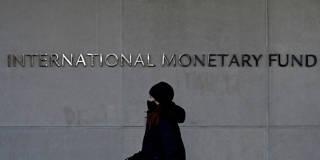After long advocating policies that put the interest of private capital before those of emerging markets and developing countries, the International Monetary Fund has been recognizing the error of its ways. But if it really wants to get back to its core mission, it must reform its position on capital controls.
NEW YORK – The International Monetary Fund is showing promising signs of changing with the times. In addition to recognizing that climate change poses significant risks to financial stability, it has responded to the pandemic with a major new allocation of special drawing rights (the Fund’s reserve asset), while criticizing the G20’s inadequate framework for dealing with debt distress. Moreover, in a recent agreement with Argentina, the Fund has largely abandoned the kind of austerity programs that have long plagued its reputation, not to mention undercutting livelihoods around the world.
The IMF will have a chance to take another major step in the right direction when it reviews its stance on capital-flow regulation later this month. The original rationale for such regulation, enshrined in the IMF’s Articles of Agreement, was that cross-border capital flows could disrupt international financial markets, the stability of which was the IMF’s raison d’être.
Yet, ironically, in the Fund’s darker days during the 1980s and 1990s, it made bailout packages conditional on recipients deregulating financial flows; and in the late 1990s, it even tried to change the Articles of Agreement to outlaw capital-flow regulation. But the 1997-98 East Asian financial crisis, which resulted largely from capital-market deregulation, sidelined that effort. After those tumultuous years, many middle-income countries pushed back against the IMF’s drive for capital-market liberalization and “self-insured” against capital-flow volatility by accumulating foreign-exchange reserves and implementing capital-account measures.

NEW YORK – The International Monetary Fund is showing promising signs of changing with the times. In addition to recognizing that climate change poses significant risks to financial stability, it has responded to the pandemic with a major new allocation of special drawing rights (the Fund’s reserve asset), while criticizing the G20’s inadequate framework for dealing with debt distress. Moreover, in a recent agreement with Argentina, the Fund has largely abandoned the kind of austerity programs that have long plagued its reputation, not to mention undercutting livelihoods around the world.
The IMF will have a chance to take another major step in the right direction when it reviews its stance on capital-flow regulation later this month. The original rationale for such regulation, enshrined in the IMF’s Articles of Agreement, was that cross-border capital flows could disrupt international financial markets, the stability of which was the IMF’s raison d’être.
Yet, ironically, in the Fund’s darker days during the 1980s and 1990s, it made bailout packages conditional on recipients deregulating financial flows; and in the late 1990s, it even tried to change the Articles of Agreement to outlaw capital-flow regulation. But the 1997-98 East Asian financial crisis, which resulted largely from capital-market deregulation, sidelined that effort. After those tumultuous years, many middle-income countries pushed back against the IMF’s drive for capital-market liberalization and “self-insured” against capital-flow volatility by accumulating foreign-exchange reserves and implementing capital-account measures.